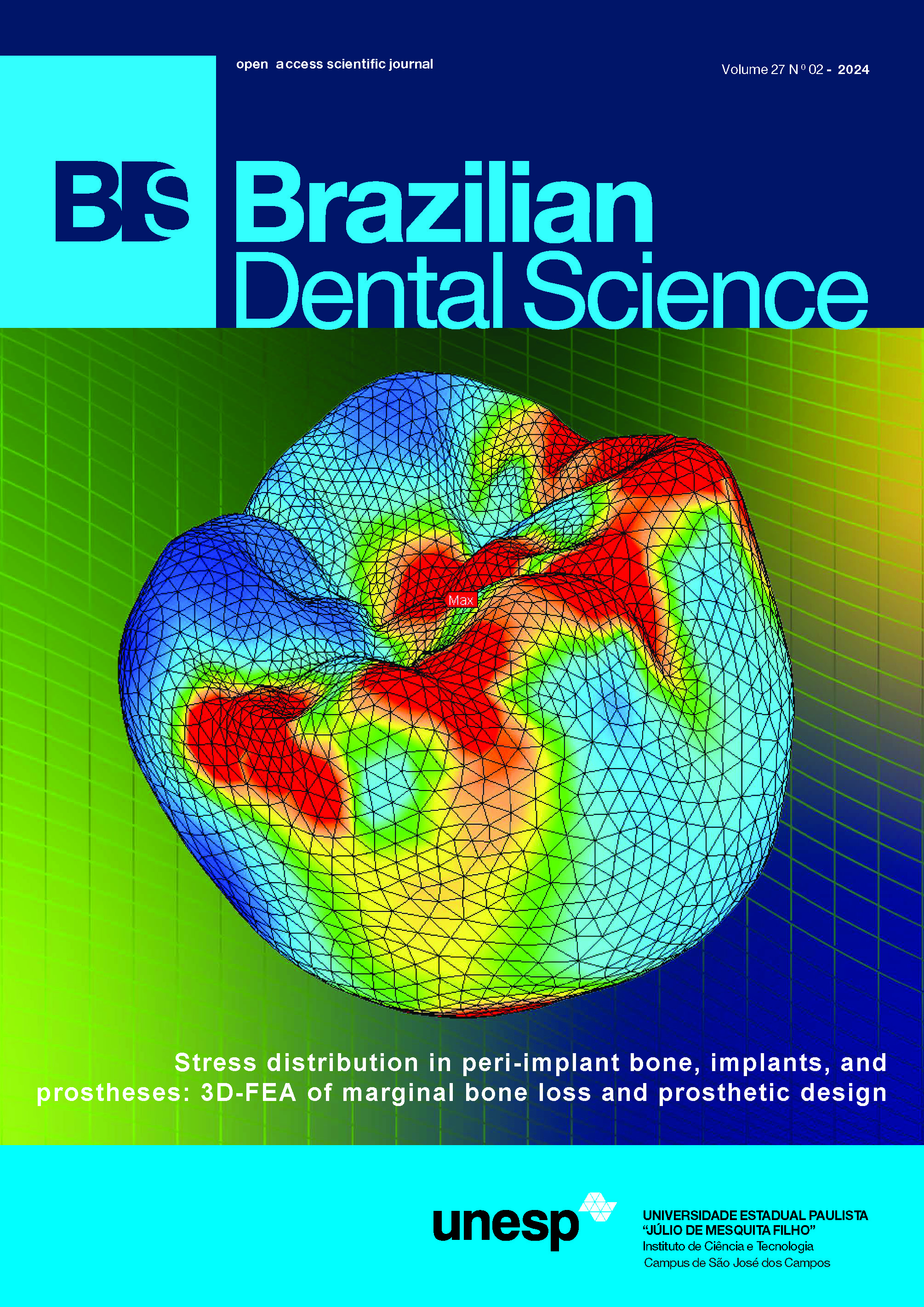Changes in epithelial cells adjacent to orthodontic devices
DOI:
https://doi.org/10.4322/bds.2024.e4142Resumo
Objective: The majority of oral lesions in the epithelial tissue are caused by local irritation so the purpose of this study is to compare between the patients have fixed orthodontic device and patients without orthodontic device and to perform cytomorphometric and cytological examinations of the oral mucosa epithelium close to metal brackets and band areas. Material and Methods: The study comprises 40 participants, divided into two distinct groups: a control group of 20 patient without fixed orthodontic appliance and the second group is 20 patients with fixed orthodontic appliance. Smears were collected from the oral mucosa adjacent to the orthodontic bracket and adjacent to the band area in the orthodontic patients while cell collection from non-orthodontic patients taken from buccal mucosa then the smears stained and analyzed using an alight microscope. Results: This study shows a significant difference in Nuclear area,cytoplasmic area and nuclear cytoplasmic area ratio between control, bracket and molar area, showing alteration change in the cell of the epithelial tissue adjacent to molar band then bracket area and appearance of type II inflammatory smears, according to Papanicolau classification especially in band area. Conclusion: Metal brackets and molar band cause cytomorphometric and cytomorphological changes adjacent oral mucosa cells.
KEYWORDS
Epithelial cell; Fixed appliances; Oral mucosa; Orthodontic appliance; Papanicolau Classification.
Downloads
Downloads
Publicado
Como Citar
Edição
Seção
Licença
TRANSFERÊNCIA DE DIREITOS AUTORAIS E DECLARAÇÃO DE RESPONSABILIDADE
Toda a propriedade de direitos autorais do artigo "____________________________________________________________________" é transferido do autor(es) para a CIÊNCIA ODONTOLÓGICA BRASILEIRA, no caso do trabalho ser publicado. O artigo não foi publicado em outro lugar e não foi submetido simultaneamente para publicação em outra revista.
Vimos por meio deste, atestar que trabalho é original e não apresenta dados manipulados, fraude ou plágio. Fizemos contribuição científica significativa para o estudo e estamos cientes dos dados apresentados e de acordo com a versão final do artigo. Assumimos total responsabilidade pelos aspectos éticos do estudo.
Este texto deve ser impresso e assinado por todos os autores. A versão digitalizada deverá ser apresentada como arquivo suplementar durante o processo de submissão.
























